Prekinder to Grade 2 Mathematics
Fixing Equations
Fixing Equations
Sometimes we have an equation that is missing a value, and we need to work out what value to put into the equation to make it true. Alice the cow has an equation like this.
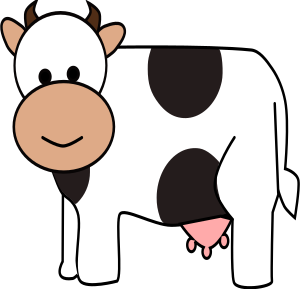
Alice, the thrill-seeking cow, has decided that she would like to try white water rafting. She has designed her own raft and needs barrels to build it. So far, she has collected \(9\) barrels, and her design uses \(12\). Alice wants to know how many more barrels she needs to collect to build her raft. She has the following equation:

Techniques for Fixing Addition Equations
1. Using Balance Scales

One method of fixing addition equations is to use balance scales like the ones shown in the picture. You put the two things that need to be equal in the pans of the scales (one in each side). The two things are equal when the bar holding the pans is perfectly level. Let's fix a few equations using this technique.
Example 1
Let's see if we can fix the equation

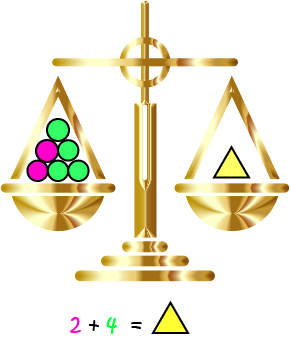
Example 2
Let's see if we can fix the equation

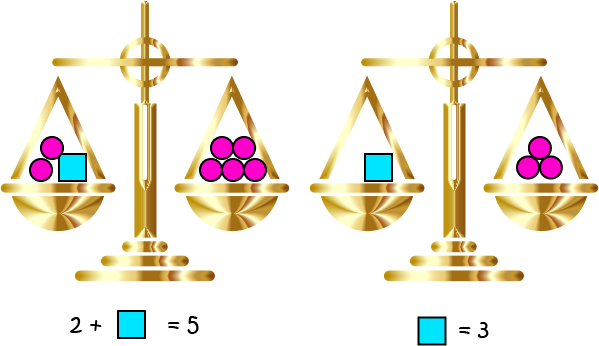
Example 3
Let's see if we can fix the equation

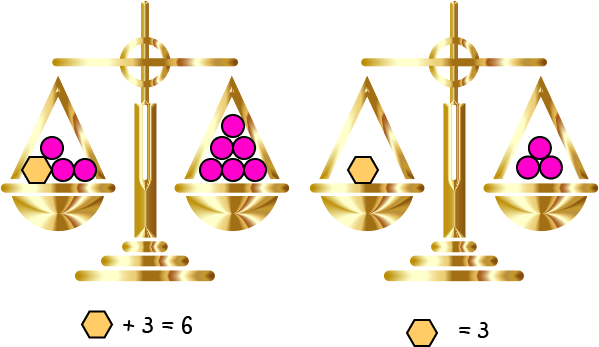
2. Using Number Lines
You can also fix addition equations using number lines. Let's have a look at a few examples.
Example 4
In this example, we just need to do a straight out addition of \(12\) and \(2\) as the two numbers are on the left hand side of the equation.
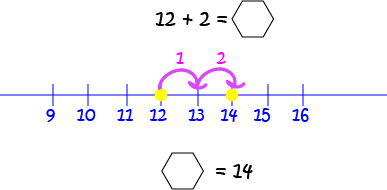
Example 5
In this example, we need to find something to add to \(8\) that will give us \(12\). Let's have a look at the number line:
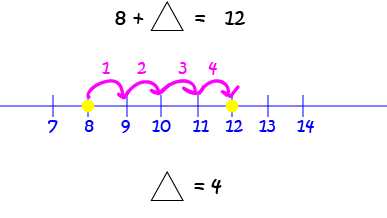
Example 6
In this example, we need to find something to add to \(3\) that will give us \(16\). We could put down dots at \(3\) and \(16\) and count the number of spaces between them, but this would take a long time. Instead, let's start at \(16\) and count back \(3\). Let's see this on the number line:
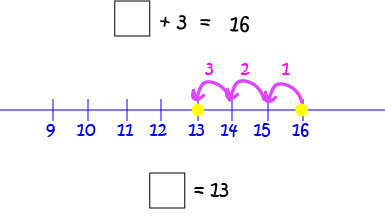
3. Using Doubles and Near Doubles
Sometimes you can fix an equation using doubles or near doubles. Let's have a look at a few examples.
Example 7
Let's fix the following equation:

Example 8
How about this equation?

Fixing Other Equations
We can also fix subtraction and multiplication equations. Let's look at a few examples.
Fixing Subtraction
As subtraction is just the reverse of addition, we can use the same techniques to fix subtraction equations. Let's try a couple using the number line.
Example 9
In this equation, we need to find a number that you can subtract from \(13\) to give \(11\).
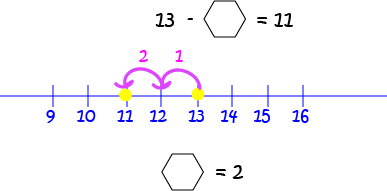
Example 10
In this equation, we need to find a number that you can subtract \(2\) from to give \(12\).
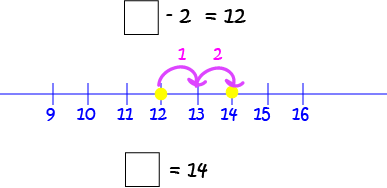
Fixing Multiplication Equations
To fix multiplication equations, we can use skip counting. Let's have a look at an example.
Example 11
In this example, we need to find a number that we can multiply by \(2\) to give \(8\). This is the same as finding a number we can multiply \(2\) by to give \(8\). Start at \(2\) and skip count by twos until you reach \(8\). Keep count of how many numbers you say as you go. This will give you the answer:
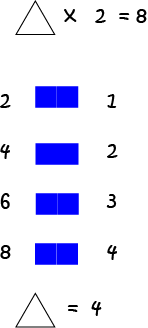
Fixing Alice's Equation
Now we can solve Alice's problem. Remember that she needed to work out how many extra barrels she needed to build her raft? We'll use a number line to fix Alice's equation:
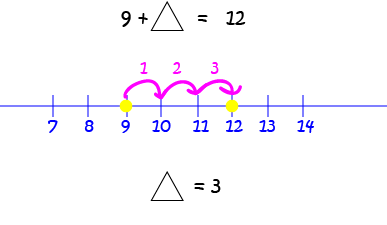
Have fun shooting those rapids, Alice! Don't forget to wear a helmet.
Description
This mini book covers the core of Math for Foundation, Grade 1 and Grade 2 mathematics including
- Numbers
- Addition
- Subtraction
- Division
- Algebra
- Geometry
- Data
- Estimation
- Probability/Chance
- Measurement
- Time
- Money
- and much more
This material is provided free of cost for Parent looking for some tricks for their Prekinder, Kinder, Prep, Year 1 and Year 2 children
Audience
Grade 1/Year 1, Grade 2/Year 2, Prep, Foundation, Kinder and Pre-Kinder
Learning Objectives
These lessons are for kids aged 4-8 with the core objective to expose their brains to concepts of addition, subtraction, division, algebra and much more.
Author: Subject Coach
Added on: 6th Apr 2018
You must be logged in as Student to ask a Question.
None just yet!